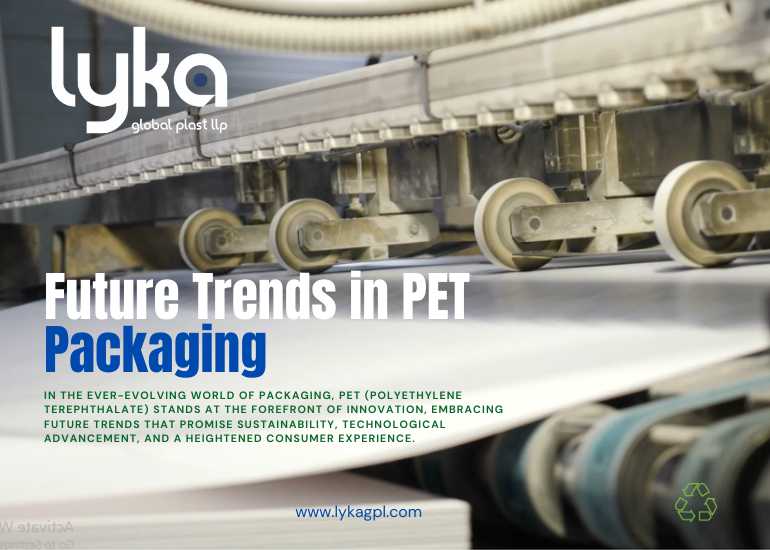
Future trends in PET (polyethylene terephthalate) packaging are shaped by various factors, including consumer preferences, sustainability concerns, technological advancements, and regulatory changes. Here are some key trends that are expected to shape the future of PET packaging:
- Increased Use of Recycled PET (rPET): The use of recycled PET is expected to grow significantly. Brands are increasingly adopting rPET for their packaging to reduce their environmental footprint and meet sustainability goals. Some companies are even committing to using 100% rPET in their packaging.
- Lightweight: Brands will continue to focus on lightweighting PET sheets packaging. This involves reducing the amount of plastic used in each container while maintaining structural integrity. It helps reduce material usage and transportation costs.
- Design for Recyclability: Packaging designers will prioritize creating PET packages that are easily recyclable. This includes using label materials that can be separated from the PET during recycling and avoiding complex packaging designs that are challenging to process.
- Innovative Shapes and Sizes: PET packaging will see more creative and functional shapes and sizes to stand out on the shelf and improve user experience. Unique bottle designs and closures can enhance brand identity and consumer engagement.
- Sustainable Packaging Innovations: Innovations in sustainable packaging solutions will continue, such as developing barrier coatings that reduce the need for multi-layer packaging, thereby improving recyclability.
- Biodegradable Additives: There will be increased research and development in biodegradable additives for PET, making it possible for PET to break down more quickly in certain environments.
- Smart Packaging: PET packaging may incorporate smart features like QR codes, NFC tags, or other technologies that provide consumers with product information, track freshness, and enable interactive experiences.
- Hybrid Materials: Companies may experiment with hybrid packaging materials that combine PET with other materials like paper or biodegradable plastics to improve sustainability and functionality.
- Circular Economy Initiatives: Brands will increasingly embrace circular economy principles, aiming to recover and recycle PET packaging to create new packaging materials and reduce waste.
- Reduced Plastic Content: Some companies are exploring methods to reduce the overall plastic content in their PET packaging. This could involve thinner walls, alternative materials, or novel manufacturing processes.
- Consumer Education: Efforts to educate consumers about the importance of recycling PET packaging and responsible disposal will continue to grow. Improved recycling infrastructure and collection systems may also emerge.
- Regulatory Changes: Governments and regulatory bodies are likely to introduce stricter regulations on plastic packaging to promote sustainability. This could include mandates for recycled content, extended producer responsibility (EPR) programs, and bans on certain packaging materials.
These trends reflect the industry’s response to growing environmental concerns and consumer demands for more sustainable packaging options. As technology and innovation advance, PET packaging is expected to evolve to meet these challenges while maintaining its functionality and cost-effectiveness.
